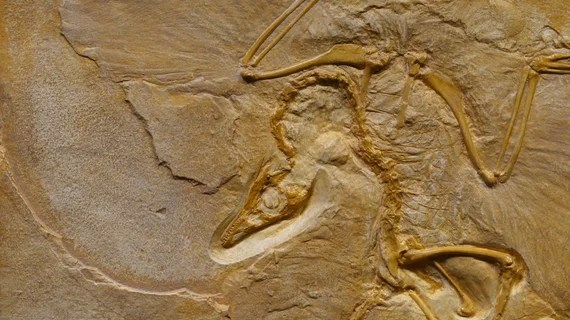Hospital, museum team up to CT scan dinosaur bones
A hospital and a dinosaur museum are collaborating on a project to better understand the anatomy of the prehistoric reptiles that ruled the earth 65 million years ago.
The Badlands Dinosaur Museum and CHI St. Alexius Health, both in North Dakota, are preparing to utilize CT imaging on fossils in hopes of uncovering more information about the way dinosaurs walked, roared and lived. The collaboration will allow for scans of delicate fossils that are hard to examine and could yet yield new scientific information.
According to the Dickinson Press, the research project will include a variety of dinosaur species, with most of the fossils found in North Dakota and neighboring Montana. And yes, a tyrannosaurus is among them.
From dinosaur duck bills to large horned skulls, the CT scans not only provide valuable data to researchers—such as insight into how a dinosaur breathed, based on the structure of its nostril cavity—they allow the museum to preserve the fossils digitally, creating a backup in case they crumble or break.
The project could also lead to the creation of better models generated from CT image data, from 3D-printed dinosaur bones to digital simulations.
Read the full story from the Dickinson Press at the link below.

